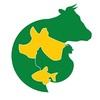Keywords: SG 9R, Aflatoxin, Salmonella, Adsorbent, Mycotoxins
INTRODUCTION
Most developed countries around the world have eradicated Salmonella Gallinarum (S.G.) and S. Pullorum (S.P.) from commercial flocks, and now concentrate mainly in the prevention of infections caused by the paratyphoid group. However, a high percentage of the commercial layer’s world population is still affected by S.G., therefore vaccination with a live attenuated vaccines of S. Gallinarum (SG 9R) is a strategy frequently used in some areas. After vaccination, developing immunity is critical to get the right protection against field challenge. One serious factor affecting the development of immunity is the presence of mycotoxins, including Aflatoxin (AFL). The objectives of this experiment were threefold: measuring the immune response in birds vaccinated with SG 9R, quantifying the impact of AFL on the immune response, and determining if the mycotoxin adsorbent used had an effect on the immune response.
MATERIALS AND METHODS
This experiment was conducted at Imunova Laboratory in the Federal University of Parana (UFPR) in Brazil. A total of 240-day-old commercial baby chicks (Hendrix®, ISA- Brown®) free of Salmonella, were raised in isolation units since day one, to avoid cross contamination among treatments. All birds had ad libitum access to feed and water. Pullets were divided in a complete randonmized design with 8 treatments of 26 birds each. T1 was the negative control (no vaccine, no AFL, no adsorbent), T2 was vaccinated, intoxicated (2.5 ppm), and treated with the adsorbent (2.5 kg.ton), T3 was only vaccinated, T4 was vaccinated and intoxicated (2.5 ppm), T5 was only intoxicated with AFL (2.5 ppm), T6 intoxicated (2.5 ppm) and treated with the adsorbent (2.5 kg/ton), T7 was vaccinated and intoxicated with AFL (1 ppm), and T8 was vaccinated, intoxicated (1 ppm), and treated with the adsorbent (1 kg/ton).
The feed was analyzed to detect any possible contamination with Salmonella or AFL. SG 9R®, was obtained from Merck Animal Health, USA. AFL was obtained from LAMIC, Federal University of Santa Maria in Brazil and mixed with the feed using two inclusion rates. Mycoad®, the mycotoxin adsorbent (clay) was added using two inclusion rates, and bought from Special Nutrients in Florida, USA. The immune response was measured with flow cytometry (FACSCalibur®/ Becton Dickinson). The data obtained was analyzed with software from one the following companies: FlowJo® (TreeStar) or WinMDI 2.9 (Joseph, Trotter). Four types of T lymphocytes were measured with flow cytometry. Body weight and mortality were recorded during the duration of the trial and all birds were euthanized at the end of the trial. After post mortem sessions were performed, macroscopic changes were recorded and histopathological studies were performed at UFPR.
IMMUNE RESPONSE/BLOOD RESULTS
The statistical analyses were performed separating the results for each blood collection. All treatments were compared against each other. An analysis of variance (Anova) with the method of Fisher PLSD (P 0,05) comparing the media of all groups among themselves was done. StarView® (SAS Institute, Inc.) was the statistical program used for this evaluation.
RESULTS AND DISCUSSION
Performance. The control treatment (T1), vaccinated treatment (T3), and the vaccinated/ intoxicated treatment treated with Mycoad-1 kg/mt (T8) showed the same statistically significant body weight during the whole experiment (table2). At 31 and 42 days, the treatment only intoxicated with AFL (T5), showed a significantly lower body weight than the control (T1), vaccinated treatment (T3), and the vaccinated/intoxicated treatment treated with Mycoad-1 kg/mt (T8). No mortality was reported in any of the groups. All intoxicated treatments not treated with the adsorbent showed a significant reduction in body weight when compared to the non-intoxicated birds. This reduction in body weight was also reported in young commercial layers in a previous publication (4).
Macroscopic observations. Vaccinated birds (T3) showed enlarged livers, slightly greenish with rounded lobules (picture 1). Birds intoxicated with AFL (T5) and birds intoxicated and vaccinated (T4, T7) showed a fragile liver with a yellowish appearance and the presence of multiple red dots. Other groups didn’t show any lesions.
Microscopic observations. Histopathological evaluation of the liver in T5 showed the typical lesions produced by an intoxication with AFL, that is, lipidic vacuolization of the hepatocytes, areas of necrosis and hypertrophy of the biliary ducts.
Immune Response. This experiment shows a significant reduction in the concentration of helper T lymphocytes in the treatments intoxicated with AFLA. Peripheral helper T lymphocytes (table 3) and mucosal auxiliary T lymphocytes (table 4) showed a significant reduction when comparing the vaccinated treatment (T3) with the vaccinated and intoxicated treatment (T4). A significant reduction in the concentration of cytotoxic T lymphocytes (tables 5 and 6) is observed at 42 days. This reduction is also observed when comparing the vaccinated treatment (T3) with the vaccinated and intoxicated treatment (T4). Other researchers (3) have reported that the inclusion of corn naturally contaminated with AFL and Fumonisin significantly decreased CD4 + and CD8 + T lymphocytes in the intestinal mucosa of broilers. Feeding naturally contaminated corn with Fusarium toxins, another report (2) found a reduction in white blood cells, B lymphocytes, CD4 + and CD8 + T lymphocytes.
CONCLUSIONS
SG 9R vaccination and the inclusion of a mycotoxin binder in birds vaccinated and intoxicated did not have a significant negative effect on body weight. SG 9R vaccination promoted a statistically significant reduction in the concentration of activated cytotoxic lymphocytes T (CD8-CD28-). This marker can be measured as a parameter before and after vaccination in commercial layers. AFL showed an important suppressive effect on mucosal auxiliary T lymphocytes (CD4+TCRVβ1+), periferic auxiliary T lymphocytes (CD4+TCRVβ1-), and mucosal cytotoxic lymphocytes (CD4-TCRVβ1+) in vaccinated birds. A significant difference (p<0,05) was detected in blood samples taken 3 and 14 days after vaccination. The inclusion of 2.5 kg/ton of the mycotoxin adsorbent in feed prevented the negative effects on the immune parameters already mentioned. A significant increase (p< 0,05) in the concentration of mucosal auxiliary T lymphocytes (CD4+TCRVβ1+), auxiliary periferic T lymphocytes (CD4+TCRVβ1-) and mucosal cytotoxic T lymphocytes (CD4-TCRVβ1+) was detected at 42 days of age.


















